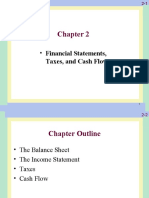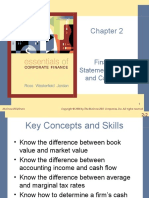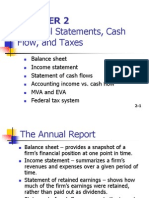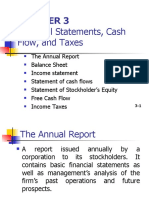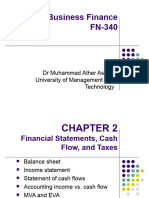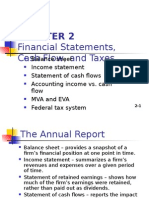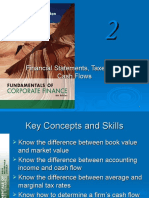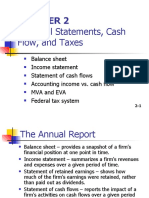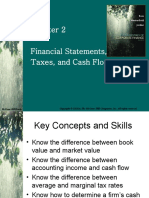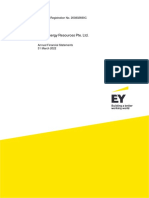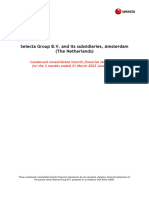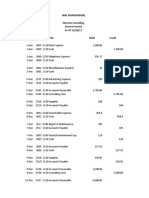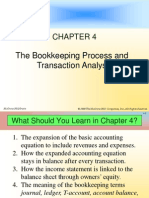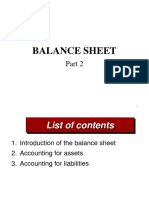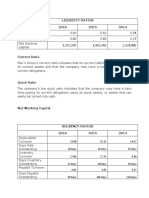0% found this document useful (0 votes)
89 views22 pagesMBA CF Session 3 PDF
The document provides an overview of key financial statements - the balance sheet, income statement, and statement of cash flows - and discusses taxes. It summarizes a company's 2008 annual report, noting a decline in cash and increase in payables. Free cash flow for 2008 was negative Rs. 744,201. Personal and corporate tax rates in India are outlined, with the highest marginal personal tax rate being 30% and effective corporate tax rate around 32-42% depending on foreign or domestic status.
Uploaded by
biranchinpCopyright
© © All Rights Reserved
We take content rights seriously. If you suspect this is your content, claim it here.
Available Formats
Download as PDF, TXT or read online on Scribd
0% found this document useful (0 votes)
89 views22 pagesMBA CF Session 3 PDF
The document provides an overview of key financial statements - the balance sheet, income statement, and statement of cash flows - and discusses taxes. It summarizes a company's 2008 annual report, noting a decline in cash and increase in payables. Free cash flow for 2008 was negative Rs. 744,201. Personal and corporate tax rates in India are outlined, with the highest marginal personal tax rate being 30% and effective corporate tax rate around 32-42% depending on foreign or domestic status.
Uploaded by
biranchinpCopyright
© © All Rights Reserved
We take content rights seriously. If you suspect this is your content, claim it here.
Available Formats
Download as PDF, TXT or read online on Scribd
/ 22


